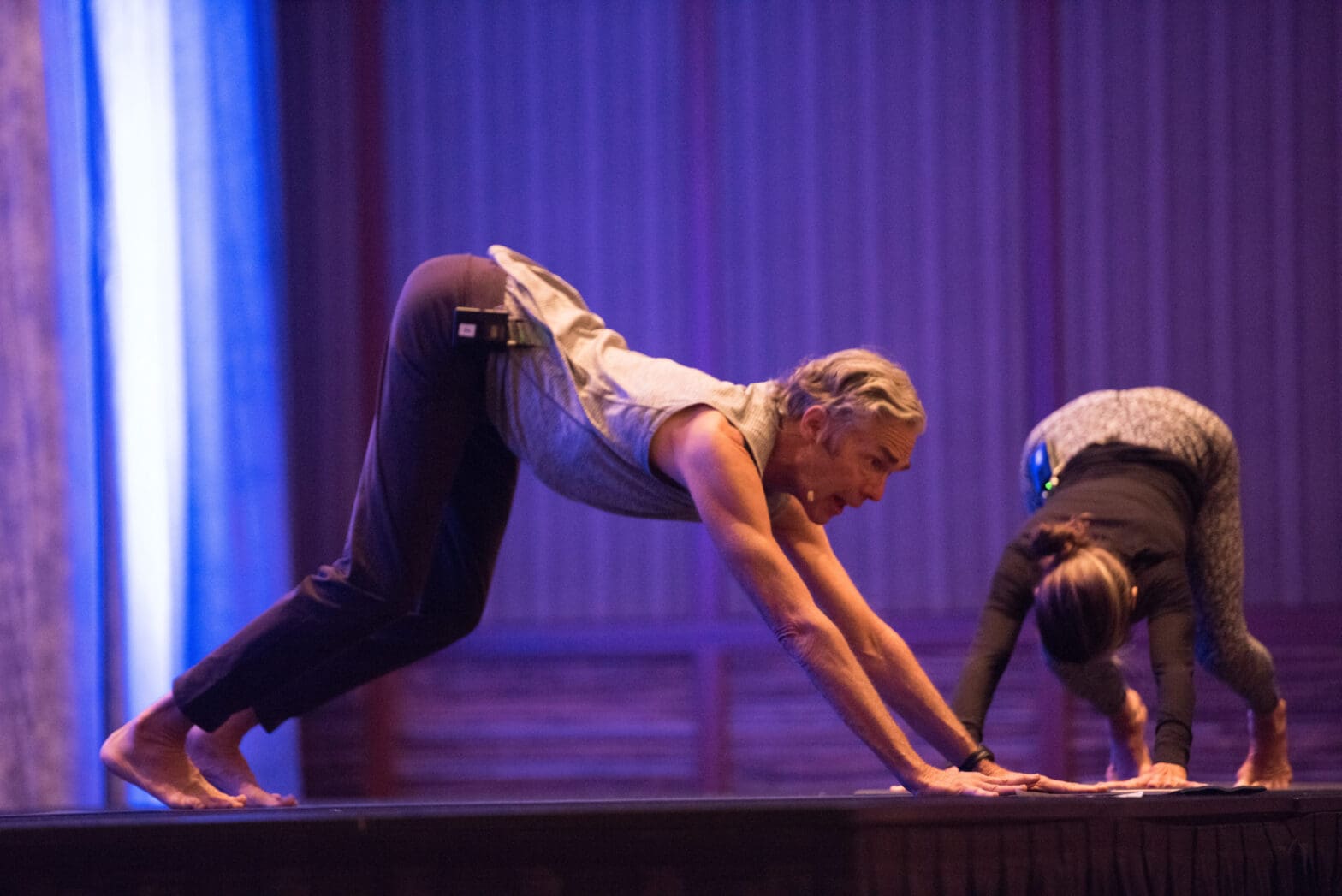Organizer Participants Interoception can be broadly defined as the sense of signals originating within the body. As such, interoception is critical for our sense of embodiment, motivation, and well-being. And yet, despite its importance, interoception remains poorly understood within modern science. This paper reviews interdisciplinary perspectives on interoception, with the goal of presenting a unified …
Topic Archives:
Yoga with Mary Taylor and Richard Freeman
Mind and currents of sensation in the body are intimately linked. These morning classes will be an exploration of the interweaving threads of form, breathing, and gazing upon which yoga postures are strung together to produce a smooth, rhythmic flow of movement. Learning to release the palate and to follow the patterns of the breath …
Continue reading “Yoga with Mary Taylor and Richard Freeman”
Bridging Contemplative Science and Business: An Emerging Global Industry, Innovation Panel co-hosted by The Eagle and The Hawk Foundation and the Aetna Foundation
A new industry is emerging before our eyes, as contemplative research grows and companies, consumers, insurers, and healthcare systems are integrating mindfulness and other meditation-related products and services at an expanding rate. Hear from leaders how the industry is emerging and how to build bridges between contemplative science, entrepreneurs, large companies, investors, and healthcare systems …
Engaged Contemplative Practice in Islamic Sufism: Vocal Emphasis
This workshop will involve two methods of engaged contemplation in Islamic Sufism, consisting of silent and vocal forms of “remembrance” (dhikr). The ultimate purpose of these methods is to retrain the individual’s consciousness to respond — at each moment in one’s daily life — toward one’s consciousness and whatever appears in it, responding with an …
Continue reading “Engaged Contemplative Practice in Islamic Sufism: Vocal Emphasis”
Tibetan Sound Meditation
The Tibetan Sound Meditation is based on ancient texts and teachings from the Tibetan Bon Buddhist tradition as taught by Tenzin Wangyal Rinpoche (Tibetan Sounds Healing, SoundsTrue, 2006). Parts of this practice have been used at MD Anderson dating back to 1999. In 2008, a small randomized clinical trial using the Tibetan Sound Meditation program …
Master Lectures: What’s ‘Critical’ About ‘Critical First-Person’ Perspectives?
Perhaps the hallmark of the distinctive forms of teaching developed at Brown and deemed “Integrative Contemplative Pedagogy” is a method of classroom study of meditation practices called the “Critical First-Person Perspective.” In this method, students try out specific contemplative practices that are linked to a Third-Person study of texts and contexts. In other words, they …
Continue reading “Master Lectures: What’s ‘Critical’ About ‘Critical First-Person’ Perspectives?”
NCCIH Research Priorities and Funding Opportunities for Mind and Body Health
As part of NCCIH’s current strategic plan, there is a strong focus on advancing fundamental science of the mechanisms by which mind-and-body approaches affect health, resiliency and well-being. Additionally, NCCIH has a robust clinical research program to assess the safety and efficacy/effectiveness of a range of mind-and-body approaches for treatment and/or management of care for …
Continue reading “NCCIH Research Priorities and Funding Opportunities for Mind and Body Health”
Daoist Contemplative Practice: Standing Meditation and Qigong
These sessions will explore Daoist (Taoist) standing meditation, Yangsheng (Nourishing Life), and movement practices. Also referred to as Qigong (Ch’i-kung; Qi Exercises), Yangsheng is a form of health and longevity practice. Each session will begin with formal instruction on quiet standing (jingzhan) and then explore specific movement practices. While some attention will be given to …
Continue reading “Daoist Contemplative Practice: Standing Meditation and Qigong”
Master Lectures: Understanding the Psychology Behind Compassion Meditation
Compassion is emerging as a major focus in the new field of contemplative science, which integrates scientific research with contemplative practice, exploring its real-world applications such as health, education and general well-being. Standardized protocols, such as Stanford University’s CCT (Compassion Cultivation Training), UCSD’s Mindful Self-Compassion, and Emory University’s CBCT (Cognitively-Based Compassion Training), are today offered …
Continue reading “Master Lectures: Understanding the Psychology Behind Compassion Meditation”
Master Lectures: Neurobiological Underpinnings of Contemplative Practices: Is There Common Ground (and who cares)?
What’s happening in (and to) my brain when I meditate? This question is asked time and time again by individuals undertaking contemplative practices, journalists writing articles about mindfulness, and scientists trying to figure out what is happening on a neurobiological level during these practices. A growing number of studies have been published in an attempt …



